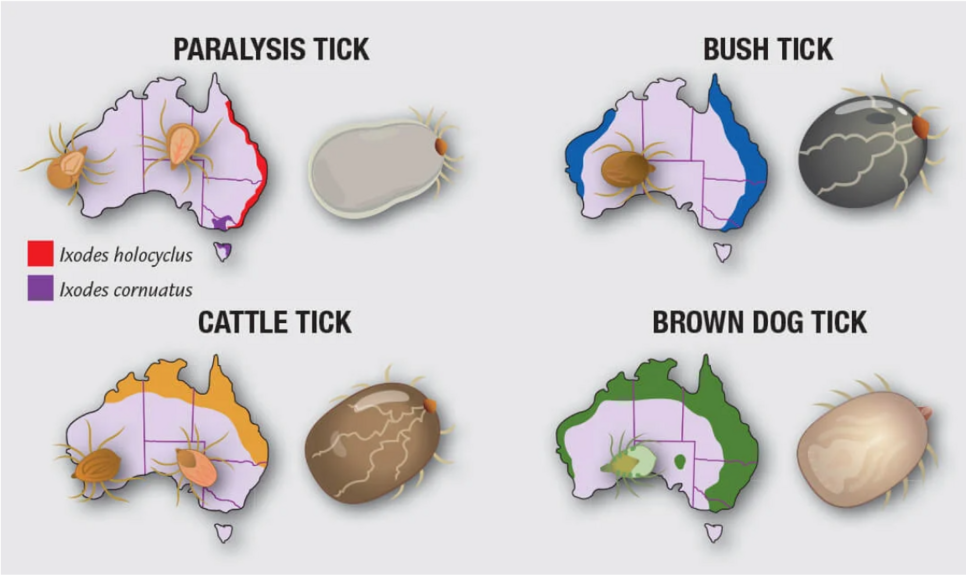Last Updated: 30/05/2025
Which Flea and Worming Product Does Your Dog Need?
Find the best flea and worm treatment for your dog with our easy guide!
Author: Dr Carla Paszkowski BVSc (Hons)
Reading Time: 20 minutes - medium read
Last Updated: 30/05/2025
Find the best flea and worm treatment for your dog with our easy guide!
Author: Dr Carla Paszkowski BVSc (Hons)
Reading Time: 20 minutes - medium read


Is your dog covered for fleas, ticks, intestinal worms and heartworm? It can be confusing to work out which products to give and when and many pet parents are unaware that their fur family members are at risk of infestation.
These pesky critters can not only cause discomfort and irritation for your dog but also transmit serious diseases. Choosing the right preventative measures is crucial for your dog's health and well-being. This article will guide you through the maze of available products, helping you make informed decisions to keep your furry friend happy and healthy.
Learn more about common parasites with our article A Guide To Fleas, Ticks, Worms and Heartworm.
Many broad spectrum preventatives do not include coverage for hydatid tapeworms.
Dogs aquire hydatid tapeworms from feeding on infested animal carcasses or being fed contaminated raw meat or offal. Dogs with hydatid tapeworm can transmit hydatids to humans which can result in serious illness. This means that regular deworming with a tapewormer effective against hydatids is key for dogs in rural areas or likely to come in contact with contaminated meat or carcasses. Worming tablets and chews which cover hydatid tapeworm in dogs include Drontal, Milbemax, Endogard and Paragard.
Dogs in urban areas who are not fed any raw meat or offal are at a very low risk of picking up hydatid tapeworms, so many pet parents opt to leave out hydatid coverage. Speak with your veterinarian about whether they recommend including coverage for hydatid tapeworm in your dog's parasite prevention program.
To help you decide which product might work for you, we've outlined a few options below.
While there is no one product which covers absolutely every parasite, a few broad spectrum products such as Nexgard Spectra, Simparica Trio and Credelio Plus can be a 'one and done' solution for dogs in urban areas at low risk of hydatid tapeworms.
If you find giving your dog parasite treatments difficult, choosing longer lasting treatments can be a more convenient way to go.
Your veterinarian can give your dog an injection which covers your dog for heartworm for a full 12 months. Many pet parents opt for this at the same time as their dog's annual vaccinations for extra convenience.
With heartworm covered, you can then use a long lasting flea a tick treatment like Bravecto chews (every 3 months) or Bravecto spot on (every 6 months).
This just leaves coverage for intestinal worms, plus hydatid tapeworms if your dog is at risk of these. Most vets recommend giving your dog an intestinal wormer like Drontal, Paragard or Endogard at least every 3 months.
While most dogs are happy to take a tasty chewable, there are some that will refuse to accept tablets or chews no matter how they are flavoured or disguised. There's no 'all in one' spot on option for dogs, but a combo of monthly Advocate plus Bravecto Spot On for dogs every 6 months will take care of fleas, ticks, heartworm and intestinal worms.
Remember that where you live will influence your dog's need for protection against certain parasites, particularly ticks and hydatid tapeworm. Speak with your veterinarian about what level of coverage your dog might need.
Whatever parasite problem you're facing, there is a treatment available to save the day. Always read the label on medications carefully to ensure that your pet will be fully covered against all common parasites.
For example, some medications that appear to treat intestinal worms do not necessarily treat tapeworm, and a separate treatment may be required. If you are unsure as to which treatment path to embark on, it is always best to consult with a professional.
Still confused? Ask a Pet Circle Vet for some guidance. We're here and happy to help!
Want to read more? Check out our other articles:
A Guide to Fleas, Ticks, Worms, and Heartworm
How To Get Rid of Fleas Once and For All
Stop the Scratching: Cures for Skin Allergies in Dogs
Premium Pet Food: Is It Worth It?
What are Yeast Infections in Dogs?

Some parasites may not pose a risk to your pet, depending on your area or lifestyle.
Paralysis ticks tend to only live along the eastern coastline of Australia, however some odd cases may occur as far west as Melbourne. Ticks are also seasonal, which means they may not pose as much of a risk from April to August - however this changes year by year.
The Brown Dog Tick and Bush Tick are more widespread throughout Australia, and though they do not cause paralysis, they can transmit deadly diseases such as Ehrlichiosis.
For dogs along the east coast at risk of paralysis ticks, we recommend using isoxazoline-based products such as Simparica Trio, Nexgard Spectra or Bravecto.
For dogs living along the east coast in areas at risk of both paralysis ticks and brown dog ticks, we recommend an isoxazoline-based product (as above) as well as a repellant product such as Seresto Tick Collar.
For non-east coast locations in Brown Dog Tick areas, we recommend kill and repel products such as Seresto.

Our experts continually monitor the health and wellness space and we update our articles when new information becomes available.
Veterinarian
Dr. Carla graduated from the University of Queensland in 2013 with a Bachelor of Veterinary Science and worked for a number of years in small animal clinics across South East Queensland. While Carla enjoys most facets of clinical veterinary work, she holds a special passion for feline medicine, pocket pets, and nutrition.